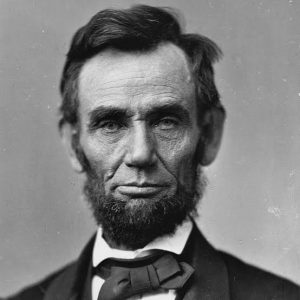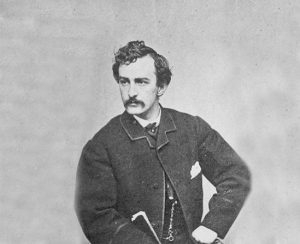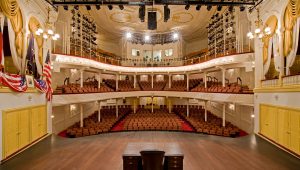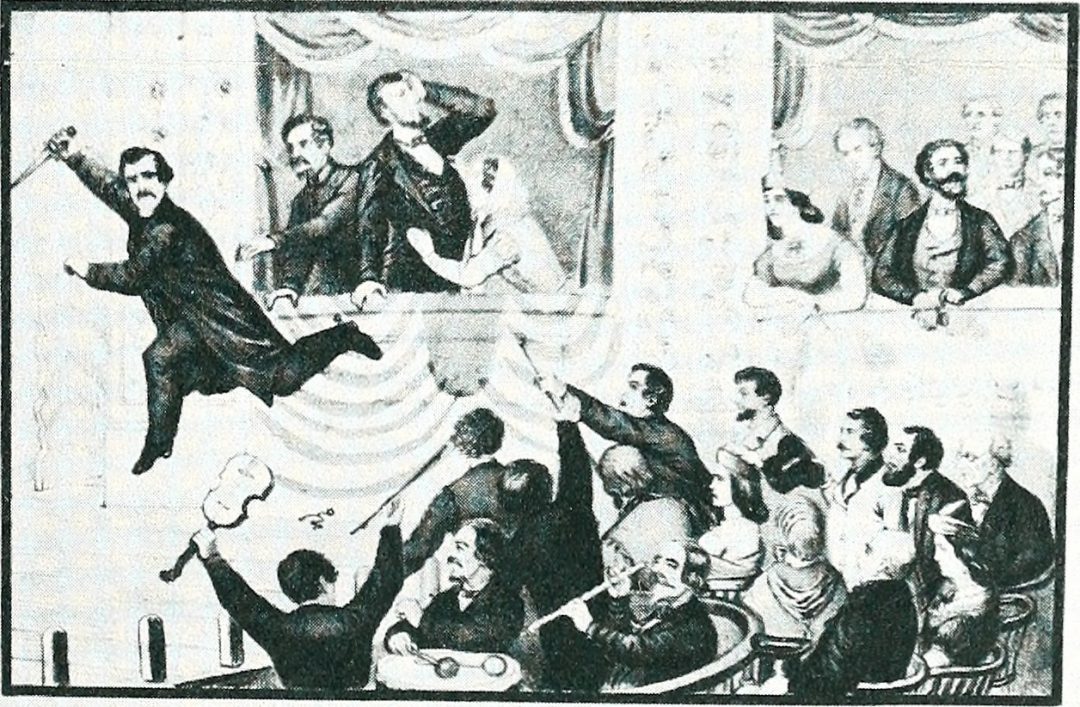This piece is an image from an article called “The Assassination of Abraham Lincoln,” published by the Lincoln Financial Foundation Collection. It was made in 1865, right after the assassination of Abraham Lincoln, which was on April 15th, 1865. This image sheds light on the brutality of what happened the night of Lincoln’s assassination.
The image shows John Wilkes Booth, Lincoln’s assassinator, jumping from a balcony of a theater. In the background, Abraham Lincoln is seen after he has been shot in the head. Although many Americans were shocked and disheartened by this news, many Americans were thrilled of the news.
Prior to President Lincoln’s assassination, the Civil War had just ended and Lincoln had abolished slavery. The Civil War was a time when the North, or the Union, fought against the South, or the Confederacy, mainly over the issue of slavery. Many of the southern Americans were furious with Lincoln’s decision to end slavery, as they relied on slaves to work on their plantations and farms for no pay. After abolishing slavery, Lincoln received all kinds of hate and threats from the South. This is when John Wilkes Booth decided to assassinate Lincoln.
Many Southerners applauded John Wilkes Booth for what he did. “Many Southerners viewed John Wilkes Booth, as he believed he would be, as a liberator. … Another Southern editor agreed, writing: ‘‘There is no reason to believe that Booth was actuated by malice or vulgar ambition. He slew Lincoln as a tyrant, and the enemy of our country—therefore, we honor his deed. Booth will surely be placed among the heroic benefactors of all mankind.’’ (3). This shows the severe political divide that was going on throughout the United States even after the Civil War ended.
This piece exemplifies the lack of security and technology of this time period. The fact that a person was even able to just walk into the balcony where the president was sitting is fascinating because that would never happen today. “I supposed thirty minutes elapsed when, while Harry Hawk in the character of Asa Trenchard was alone on the stage, to the right a pistol shot was heard. I and, no doubt, most there for the moment thought it was in the play. In a moment a tall, dark man, neatly dressed in black, sprang lightly over the front of the box occupied by the President and party, holding to the front with his hands, lowered himself to the stage floor, some twelve feet below.” (1). Everyone in the theater saw the man who assassinated Lincoln, yet, because of a lack of security and technology, it took them twelve days to finally catch him.
One interesting thing to note about this piece is how the audience is reacting. Some seem to be sitting in silence and others seem to be standing up and cheering due to the assassination. This furthers the point of the complete divide in the nation at the time of this piece. The sheer chaos of this piece makes it seem like the chaos would ensue for most of the night. In Recollections of Lincoln’s Assassination by Seton Munroe, he talks about the utter chaos that happened after the assassination. “ The seats, aisles, galleries, and stage were filled with shouting, frenzied men and women, many running aimlessly over one another; a chaos of disorder beyond control had any visible authority attempted its exercise. The spot upon which the eyes of all would turn was the fatal upper stage box opposite to which I now stood. Access to it was guarded, but presently a man in the uniform of an army surgeon was assisted by numerous arms and shoulders to climb into the box to join the medical men already there.” (2). This shows how big of an impact this event had on society. This is most likely a main reason why the Lincoln Foundation Collection chose to put this piece in their article.
I believe that the image properly reinforces the quote above. The image shows the utter chaos that was breaking out after the assassination through the use of emotions throughout the picture, the artist was able to create a captivating scene full of chaos and excitement. Also, the way the artist used only black and white coloring is interesting because it can accurately describe that time period of post-Civil War. Either you were for slavery (anti-Abraham Lincoln) or you were against slavery (pro-Abraham Lincoln.)



Works Cited
1. DeMotte, William H. “The Assassination of Abraham Lincoln.” Journal of the Illinois State
Historical Society (1908-1984), vol. 20, no. 3, 1927, pp. 422–28. JSTOR,
http://www.jstor.org/stable/40186927. Accessed 5 Nov. 2024.
Historical Society (1908-1984), vol. 20, no. 3, 1927, pp. 422–28. JSTOR,
http://www.jstor.org/stable/40186927. Accessed 5 Nov. 2024.
2. Munroe, Seaton. “Recollections of Lincoln’s Assassination.” The North American Review, vol.
162, no. 473, 1896, pp. 424–34. JSTOR, http://www.jstor.org/stable/25103693. Accessed
5 Nov. 2024.
3. Steers, Edward, et al. “Lincoln’s Assassination and John Wilkes Booth’s Confederate
Connection.” Lincoln Revisited: New Insights from the Lincoln Forum, edited by John Y.
Simon et al., Fordham University Press, 2007, pp. 311–26. JSTOR,
https://doi.org/10.2307/j.ctt13x0bmq.22. Accessed 5 Nov. 2024.
Link to Image: https://commons.wikimedia.org/wiki/File:The_assassination_of_Abraham_Lincoln_(1865)_(14764825325).jpg
